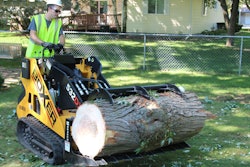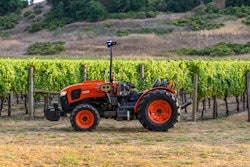 Among the most difficult plants to find, especially in the South, is the live oak.
Among the most difficult plants to find, especially in the South, is the live oak.As the busy season dawns, landscape contractors can look forward to another year in which sourcing the plants needed for commercial and residential installations will be challenging.
Naturally, the shortages seen for the past eight years – as the nursery industry slowly worked its way out of the Great Recession – are less pronounced this year for plants that can be ready for market relatively quickly. For those that take longer, including most trees, the 2016 outlook remains challenging.
What’s more, the residual effect of the past few years of shortages – particularly in the midst of a recovering housing market – mean the popular mainstays of the American landscape, in addition to plants that are trendy, are likely to be difficult to come by in large volumes.
“There are shortages in everything,” said Dennis Molitor, vice president of finance and accounting for Home Nursery Inc. in Albers, Illinois. “We have trouble in supplying” both the types and quantities sought by some clients.
Occasionally, Molitor said, Home Nursery will try to “buy in” supply to supplement its own and help meet its customers’ needs. “This year,” he said “we’re having more trouble buying in. Everyone is coming up short.”
And while popular plants such as boxwoods and shade trees are among the toughest to supply, especially in appreciable volume, the shortage is “pretty much across the board,” Molitor said.
At Fisher Farms in Gaston, Oregon, General Manager John Coulter believes 2016 may be the worst of the post-recession plant shortage. “By 2018, I think, we’ll see more of a balance restored between inventory and demand,” Coulter said. “And of course, the most popular (plants) are where the shortages are.”
After the U.S. economy tanked in 2007, the Great Recession led to several extremely difficult years for the nursery industry, Coulter said. “Our company literally threw millions of plants away,” he said. “There was no home to put them in.”
While numerous companies went under, even the strongest faced extremely difficult challenges during the long downturn. “In years past,” Coulter said, “with a shorter downturn, you may have had enough cash to get back in the game, and banks were willing to lend. Now, so many nurseries are in a really tough cash position, and the banks aren’t enthusiastic about lending to the industry.”
At Fisher Farms, he said, the effort to ramp back up began about three years ago, accelerating especially in the past 18 months. “But, again, because of the importance of that cash position, you have to be cautious. You have to be a good guesser.”
At Smoketree Landscape in Madisonville, Louisiana, co-founder Cameron Cantrelle has a unique perspective on the plant shortage. He does his share of acquiring plants for his company’s commercial and residential work, but he also runs an online marketplace called PlantBid, which enables plant buyers to survey a number of sources more quickly than they could do without the site’s aggregation of suppliers.
“It really depends on the nurseries themselves – on when they’re able to get back (to normal capacity),” Cantrelle said. “And that, in turn, depends on how much cash they were able to keep on hand and how much they’re willing to put out there.”
Still, Cantrelle believes only about 15 percent of the plant population is in low supply. But, like Molitor and Coulter, he says “it’s the items that have gotten hot – that catch the fancy of designers – that experience a shortage.”
In working with individual clients, Cantrelle said, landscape contractors may succeed in substituting plants that are more readily available – and far less expensive – for popular plants such as boxwoods and oaks that are hard to find and pricey if you do.
Cantrelle is hopeful the current tightness in the plant market will help PlantBid gain even more traction. The site has been growing well, he said, and he certainly expects that to continue, noting that an online marketplace that makes it easier to source and price plants is handy to have around in the current environment.









